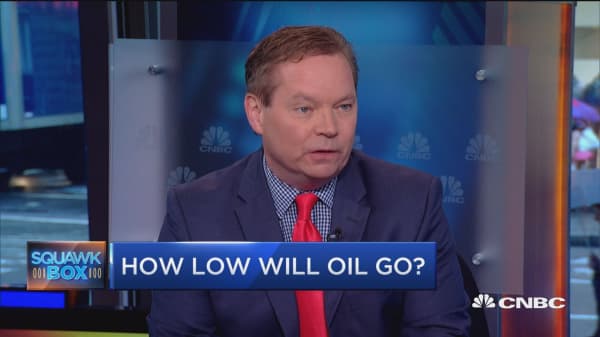Despite the hand-wringing in the market over barrels of oil that could not be given away, at points during the past year, Nigeria is still exporting a decent portion of its oil output.
The oil price losses accelerated, recently, due to a dark outlook by the International Energy Agency, in its June report, which was a change, saying that "there is an enormous inventory overhang to clear." Adding, "this is likely to dampen prospects of a significant increase in oil prices."
They got that right!
The glut is a global phenomenon, with record gasoline inventories at the main European trading hub in the Amsterdam region, and an over-supplied diesel fuel market in Asia, coupled with brimming supplies in storage of all things petroleum in the United States.
There was a rush to judgement by many in the market that supply-demand dynamic was coming to balance. Some observers actually declared it balanced already.
Meanwhile, the price curve, especially for diesel fuel, is steepening (longer-dated futures contract prices are appreciably higher than that for near-term contracts), encouraging more and more stockpiling of the fuel, including a surge in the use of floating storage.
Refinery profit margins have gotten crushed, as the earnings of ExxonMobil, Chevron, and Phillips 66 showed on Friday.
That sets up a vicious cycle for the oil market.
Refiners will react to the poor economics by cutting back on operations, in order to try and drain the refined product swamp. Of course, that will result in lowered crude oil demand, causing a renewed back-up in global crude oil inventories.
The poor economics appear unlikely to hold back production and exports of refined fuels from the new kids on the block, the so-called "tea pot" refiners in China, who recently received government approval to export greatly increased amounts of fuel that are already at record levels.
Speculators in the market have awoken to all of this, and they have dumped most of the long-position built up by them and have actually gone net short on energy, CFTC data shows.
It is going to be a rough end-of-summer and fall for oil prices. The glut has finally registered with market participants, disabusing them of the notion that the market was nearing balance.
Prices by late September are likely to trade down to $35, at least, although the low from earlier in the year at $26 is probably safe.
The current downturn may also be the final one for the cycle.
Companies that were able to barely hold on, financially, will likely give up the ghost and U.S. production will resume its fall. The U.S., it should be noted, is the only place where production has been cut for economic reasons.
Another result of the swoon, a bit of a wild card, with Iran back at full production strength, there may be a coming back together of OPEC, where the pain from the low prices, created by their own doing, gets them to agree to a coordinated production cut, in an effort to raise prices.
Next year may be a better year for the oil industry, but the second-half of this year will not be.




